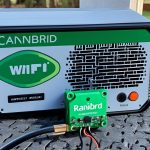Northbound APIs in software-defined networks (SDNs) are key for talking between high-level parts. They let apps, orchestrators, and network operators talk to the SDN controller. We’ll look into how these APIs work and what they do.
SDNs split the control plane from the data plane, making networks easier to manage. This setup boosts server power and can cut down on network delays1. SDNs also save storage space, making things more efficient1.
Northbound APIs send info from the central controller to SDN apps. They let clients check on the network and change its settings. This makes them vital for SDN’s work1. There are two main kinds of northbound APIs: synchronous and asynchronous.
Synchronous Northbound APIs
Synchronous northbound APIs let clients get updates on the network in real-time and change its settings. These APIs work by sending requests and getting responses. Apps and orchestrators can use this type of API to get network stats, set up network elements, and do other tasks1.
Asynchronous Northbound APIs
Asynchronous northbound APIs send updates on network changes to apps. Apps don’t ask for info directly; they subscribe to get updates on things like network changes or security events. This way, apps can react fast to network events1.
Some popular northbound APIs include the Switch API, Host API, Flows API, Links API, and Path API. These APIs help manage and control network elements well. Each API has a special role in making SDNs work1.
In summary, northbound APIs are key for letting apps, orchestrators, and network operators talk in SDNs. They offer ways to get network info, change settings, and get updates on network changes. Knowing how these APIs work is important for using SDNs well in today’s networks1.
Key Takeaways:
- Northbound APIs in SDNs enable communication between higher-level components, providing interfaces for applications, orchestrators, and network operators.
- There are two main types of northbound APIs: synchronous and asynchronous.
- Synchronous APIs allow clients to retrieve real-time information about the network and modify its state.
- Asynchronous APIs provide notifications about network changes to northbound applications.
- Commonly used northbound APIs include Switch API, Host API, Flows API, Links API, and Path API.
Synchronous Northbound APIs
Synchronous northbound APIs are key in Software-Defined Networks (SDN). They help clients and servers talk to each other well. These APIs come in two types: get and fetch, and push, post, and modify2.
The get and fetch type lets clients get info from the network without changing it2. Clients use the HTTP GET method to get info on switches, hosts, flows, and links3. They can also fetch details on network status, setup, and attributes2.
The push, post, and modify type lets clients change the network’s state through the SDN controller2. Clients can push new settings, post updates, or modify things like switch settings and flow rules2.
These APIs use the Representational State Transfer (REST) protocol for smooth communication2. REST uses standard HTTP methods like GET, POST, and DELETE2. This makes SDN controllers work well with client requests and send back the needed info or make changes3.
“Synchronous northbound APIs in SDN let clients get network info and change its state. This gives a strong way to manage and set up the network.”2
Examples of these APIs include the Switch API, Host API, Flows API, Links API, and Path API2. These APIs give clients info on switches, hosts, flows, links, and paths2.
The Switch API shows data on network switches, like IP addresses, ports, and more2. The Host API gives details on hosts, like MAC and IP addresses, and connection info2.
The Flows API shows flows between apps and network elements, with info on actions, bytes, and more2. The Links API talks about links between switches, showing details on switches and link status2.
Using these APIs, clients can manage and control their SDN setups well4. They make network management more efficient, reducing the need to change network parts directly42.
| Synchronous Northbound APIs | HTTP Method | Description |
|---|---|---|
| Switch API | GET | Shows info on switches, like IP addresses, ports, and more. |
| Host API | GET | Gives details on hosts, including MAC and IP addresses, and connection info. |
| Flows API | GET | Shows flows between apps and network elements, with info on actions and more. |
| Links API | GET | Details on links between switches, including switch info and link status. |
Asynchronous Northbound APIs
Asynchronous northbound APIs are key in software-defined networks. They help with communication between servers and clients. They make sure the application gets updates quickly when the network changes5. These APIs help apps adjust to network changes fast, making the user experience better and avoiding crashes5.
One big plus of these APIs is how they handle network changes without slowing down the user. Unlike other APIs that need quick answers from the server, these APIs don’t block operations. This means apps can keep running well even when the network is busy or has limited resources5. This leads to better app performance and stops delays from causing problems.
These APIs often use REST (Representational State Transfer) architecture, also known as RESTful APIs. REST APIs use HTTP verbs to let different software systems talk to each other5. This makes it easier for developers to create apps that work with many software systems.
For security, these APIs use various ways to check who is accessing the data. Basic Authentication is common but not the safest5. To be more secure, API Keys can be used to check if someone is allowed to access the data5. After checking, custom tokens can be made to give a unique ID that expires, making re-checks less often5.
Some APIs also use the SOAP (Simple Object Access Protocol) framework, which sends data in XML. SOAP APIs follow rules set by the W3C, including Envelope, Header, Body, and Fault components5. These APIs work well across different systems and platforms because they follow international standards.
In summary, asynchronous northbound APIs help with real-time communication between servers and apps. They send updates quickly about network changes. This makes for a better user experience, better system performance, and better network management5.
Switch API
The Switch API is key for managing software-defined networks. It gives network admins the tools to keep an eye on and manage switches well6. With it, admins can get detailed info on switches, like their features, descriptions, IP addresses, ports, and status. This info helps admins see what’s going on and fix problems fast.
The Switch API also supports various query parameters6. These let admins filter switches by certain criteria. For example, they can list all switches or find ones by their unique datapath ID.
The Switch API is vital for software-defined networks. It lets admins control and automate the network from one place6. With the API, admins can get the info they need and make smart decisions quickly. This makes the network work better, grow bigger, and stay reliable.
Software-defined networking has changed how we manage switches7. SDN puts all control in one place, making networks easier to manage7. Thanks to the Switch API, admins can use SDN to manage switches well.
In today’s fast-paced networking world, the Switch API is a must-have for admins8. It helps them watch, set up, and fix switches easily. With SDN and the Switch API, managing networks is easier and meets today’s IT needs.
Switch API Benefits:
- Efficient switch monitoring and management
- Improved network visibility and control
- Real-time optimization of switch resources
- Streamlined troubleshooting and issue isolation
- Enhanced agility and scalability
As we move towards software-defined networking, the Switch API is key for better network performance and efficiency6. It gives admins the info and tools they need to manage networks well. This leads to smarter decisions and better network strategies.
Host API
The Host API is key for network admins to get info on hosts in the software-defined network9.
This API lets users get important details like MAC and IP addresses, where hosts are connected, and how long they’ve been idle. It helps admins keep an eye on host connections smoothly9.
Users can filter hosts by MAC address, IP, or timeout with the Host API. This makes it easier to find the host info admins need9.
With the Host API, admins can keep track of and manage hosts well. This is vital in our fast-changing digital world. It ensures hosts work well together for a smooth network9.
As networks get more complex, having the right info is key. The Host API is a great tool for admins. It helps them understand and manage hosts better, leading to better network performance9.
Flows API
The Flows API is key in showing detailed info about network flows in SDN setups. It helps network admins watch and manage traffic for better performance and security.
This API gives users important flow details like flow ID, source and destination IP addresses, actions, packet count, and status. With flow query parameters, admins can sort flows by ID and datapath ID. This makes managing SDN network flows easier.
RESTful APIs form the base of the Flows API. They’re a top choice for SDN northbound APIs10. These APIs use URLs to identify resources and HTTP methods like GET, POST, PUT, and DELETE for network tasks. They offer real-time data and help automate SDN operations.
OpenFlow is also a big deal in SDN, especially for controlling network traffic10. It lets admins fine-tune traffic and update settings on the fly. OpenFlow is great for detailed traffic control in data centers and security setups.
For monitoring networks and managing services, RESTful APIs are often the go-to10. They help admins and devs get important network data, analyze traffic, and automate tasks.
But, northbound APIs in SDN come with challenges. Security and handling complexity are big concerns due to SDN’s programmability and flexibility10. It’s important to keep these APIs secure and manage their complexity well.
Using the Flows API in SDN gives admins detailed control over network flows. This helps them improve network service performance, manage resources well, and plan traffic better.
Benefits of the Flows API:
- Real-time monitoring and control of network flows
- Granular visibility into flow details and statistics
- Efficient flow filtering and management using query parameters
- Improved network traffic engineering and optimization
- Enhanced network security and threat detection
Summary:
The Flows API is crucial for SDN, letting admins monitor and control network flows well. It uses RESTful APIs and OpenFlow for detailed visibility and real-time updates. This makes managing SDN traffic efficient.
| API | Description | Use Cases |
|---|---|---|
| Flows API | Retrieves details of network flows within SDN environments | – Network monitoring and analytics – Traffic engineering and optimization – Network security and threat detection |
Links API
The Links API is key to managing software-defined networks (SDNs). It gives important info on how switches connect to each other. This helps admins understand and manage the network well.
SDNs are becoming more common in data centers. Network admins use the Links API to see how switches connect and improve network performance. This API is vital for better network management and making smart decisions.
- The Links API shows how switches connect, helping admins see the network layout.
- Knowing how switches connect helps admins plan better routes and traffic paths.
- It gives detailed info on ports, making it easier to watch and fix network issues.
Links between switches are crucial for SDNs to work well. They help keep the network running smoothly. Knowing how these links work is key to making the network better.
Enhancing Network Performance with Inter-Switch Links
The Links API helps admins use these links to boost network performance. Here are some benefits:
- Efficient Load Balancing: The API helps spread network traffic evenly. Routers use UDP and hashing to balance traffic11. This makes better use of resources and reduces congestion.
- Improved Traffic Distribution: The API helps admins manage traffic better. It knows the difference between server and data center traffic11. This is key for managing traffic well.
- Micro-Segmentation and Policy Enforcement: The API is important for managing complex networks. It helps admins set up and enforce rules by showing how switches connect11.
- Flexible and Policy-Driven Networking: The API helps move away from old VLAN methods to new, flexible networking. It gives the info needed to set and apply rules easily11.
The Links API is a big help for network admins. It lets them make the network better, faster, and safer in SDNs.
| Benefits of the Links API | Statistics/References |
|---|---|
| Efficient Load Balancing | 11 |
| Improved Traffic Distribution | 11 |
| Micro-Segmentation and Policy Enforcement | 11 |
| Flexible and Policy-Driven Networking | 11 |
Path API
The Path API is key in software-defined networks. It gives important info on the path between two ports or hosts. It shows path ID, source port, destination port, and switches in between. This helps network admins check and fix network paths for better communication12.
In a software-defined network, knowing the path is crucial for good communication between elements. The Path API gives admins important info to spot issues like bottlenecks or latency12.
With the Path API, admins can see the exact route from a source port to a destination port. They can find where congestion or latency might be, helping to make the network run smoother12.
The Path API also helps admins find and fix problems with the network’s physical setup. It shows which switches are in the path, making it easier to solve issues quickly. This makes the network more reliable and fast12.
Using the Path API, admins can make the network path better for sending data from one port to another12. This means data moves smoothly, making the network better for everyone. It helps organizations use their software-defined networks well.
Southbound Interfaces
In SDN, southbound interfaces are key for talking between the SDN controller and network devices. They let the controller manage the network devices’ data planes13.
OpenFlow is a top choice for southbound interfaces in SDN. It’s a standard protocol that makes it easy to send network commands and set up network virtualization. This helps work with the switch fabric or distributed computing networks9.
But OpenFlow isn’t the only option. Interfaces like Cisco and OpFlex also connect the controller with networking devices. They help manage the network smoothly9.
Southbound interfaces turn the network’s desired state into commands for devices. This lets the controller manage the network well and use resources efficiently4.
OpenFlow and other southbound interfaces are getting more popular in SDNs. Big names like IBM, Dell, Juniper, and Arista support these APIs a lot9.
Over the past 20 years, SDN has become key for network needs like sales, customer service, and internal talks. Southbound interfaces help automate network tasks. This leads to faster app setup, lower costs, and better network use13.
Companies love SDN for its quick app setup, cost cuts, and central network management. Southbound interfaces make networks more agile, scalable, and fast13.
Cloud networking in SDN also uses white-box systems for cost savings. Southbound interfaces make these systems work well with SDN, improving network operations13.
Northbound Interfaces
In SDN, northbound interfaces are key for talking between higher-level parts. They help make quick decisions and control in network apps.
Northbound interfaces like RESTful APIs let apps talk to the SDN controller. This controller connects the app layer with the SDN setup.
Using these interfaces, network folks and developers can change network info, settings, and rules easily. This lets them make the network work better for their needs.
Many groups use northbound APIs, like non-profits, schools, and IT firms. This shows they’re useful in many kinds of networks9.
RESTful APIs are a big hit in SDN for being easy to use. They work with standard HTTP methods like GET, POST, PUT, and DELETE10.
“Northbound interfaces let network folks innovate, customize, and automate their controls. This makes network management and operation better.”
OpenFlow is a key northbound API for detailed network control. It’s great for managing traffic in data centers and security setups10.
Benefits of Northbound Interfaces:
Northbound interfaces have many perks:
- They help apps get network info efficiently. This is good for monitoring, analytics, and making the network run better.
- With these APIs, network folks can set up network parts easily. This makes managing the network simpler and keeps settings the same everywhere.
- They let network folks make the network run faster by changing settings and managing traffic on the fly.
Challenges and Considerations:
But, using northbound APIs isn’t without its hurdles:
- Keeping network info safe when it goes through these interfaces is a big deal. It’s important to stop unauthorized access and security breaches.
- These APIs make networks more complex. They need careful planning and upkeep to manage and maintain.
Northbound interfaces, like RESTful APIs and OpenFlow, are key in managing and optimizing network parts in SDN104.
Conclusion
Software-defined networking (SDN) changes how we manage and adapt networks today. It uses northbound APIs to bring big benefits.
SDN makes managing networks easier by separating the control and data planes14. It lets devices and apps talk directly through APIs, making networks programmable and hardware-independent14. This leads to better network control, scalability, and security, among other advantages14.
But, there are challenges like security risks, high costs, and issues with latency and reliability14. To overcome these, using Software-Defined Perimeter (SDP) or VPNs can help secure networks14.
Big companies like Google, Facebook, and Microsoft are already using SDN in the cloud15. But, big network operators are being careful, starting with hybrid or production stages15. Universities are leading in SDN for research, while companies are slowly adopting it through cloud services15.
SDN’s control plane and APIs let admins and developers work together easily16. With many SDN controllers out there, like OpenDaylight and others16, SDN helps organizations move towards cloud-like computing. It also separates control from the physical network hardware16.
FAQ
What are northbound APIs in software-defined networks?
Northbound APIs let higher-level components talk to the SDN controller. They help applications, orchestrators, and network operators interact with the network. You can get info or change the network’s state through these APIs.
What are the two main types of northbound APIs?
There are two main types: synchronous and asynchronous APIs. Synchronous APIs let you get info or change the network. Asynchronous APIs send updates on network changes to applications.
What is the difference between synchronous and asynchronous northbound APIs?
Synchronous APIs are for getting info or changing the network. Asynchronous APIs send updates on network changes. Synchronous APIs use REST and HTTP, while asynchronous APIs use server-to-client communication.
What functionalities do synchronous northbound APIs offer?
Synchronous APIs have get and fetch for info, and push, post, and modify for changes. Get and fetch APIs give info without changing the network. Push, post, and modify APIs change the network state.
What functionalities do asynchronous northbound APIs offer?
Asynchronous APIs notify applications about network changes. They use server-to-client communication for updates. This lets apps react to network events and act accordingly.
What information can be retrieved using the Switch API?
The Switch API gives info on network switches. You can see switch capabilities, IP address, ports, and status. It also lets you filter switches by datapath ID.
What information can be retrieved using the Host API?
The Host API shows info on hosts in the network. You can see host details like MAC and IP addresses, and where they connect. It also filters hosts by MAC, IP, or timeout.
What information can be retrieved using the Flows API?
The Flows API shows flow details between apps and network elements. You can see flow info, packet counts, and more. It filters flows by ID and datapath ID.
What information can be retrieved using the Links API?
The Links API gives info on network links between switches. You can see details like source and destination switches, and ports.
What information can be retrieved using the Path API?
The Path API shows the path between two network ports. You can see path details, source and destination ports, and intermediate switches.
What are southbound interfaces in software-defined networking?
Southbound interfaces let the SDN controller talk to lower-level network parts. OpenFlow is a common interface for sending commands and getting network info.
What are northbound interfaces in software-defined networking?
Northbound interfaces help high-level components talk to the SDN controller. They let apps send commands and get info from the controller.
Source Links
- https://www.fieldengineer.com/skills/software-defined-networking – What is Software Defined Networking (SDN)
- https://www.arubanetworks.com/techdocs/ArubaOS_8.11.0_Web_Help/Content/arubaos-solutions/sdn-ctrl/nbap.htm – Northbound API
- https://www.arubanetworks.com/techdocs/ArubaOS_80_Web_Help/Content/ArubaFrameStyles/SDN_Controller/SDN_Controller _nbapi.htm – Northbound API
- https://www.techtarget.com/whatis/definition/northbound-interface-southbound-interface – What is a northbound interface/southbound interface?
- https://loopedback.com/2020/11/11/devasc-quick-notes-northbound-vs-southbound-api-async-vs-sync-rest-api-basics-http-and-crud-verbs-soap-api-rpc-reviewed/ – DEVASC Quick Notes – Northbound vs Southbound API, Async vs Sync, REST API Basics, HTTP and CRUD Verbs, SOAP API, RPC reviewed!
- https://www.ciscopress.com/articles/article.asp?p=3004581&seqNum=2 – Foundation Topics: Introduction to Software-Defined Networking > Software-Defined Networking Security and Network Programmability
- https://www.9tut.com/what-is-sdn – CCNA Training » What is SDN?
- http://blog.geveo.com/Introduction-to-Software-Defined-Networking – Introduction to Software Defined Networking (SDN)
- https://www.webwerks.in/blogs/southbound-vs-northbound-sdn-what-are-differences – Southbound vs. Northbound SDN: What are the differences?
- https://www.techssoftware.com/which-two-northbound-apis-are-found-in-a-software-defined-network/ – Which Two Northbound Apis Are Found In A Software-Defined Network
- https://www.ciscopress.com/articles/article.asp?p=3192410&seqNum=3 – Software-Defined Networking (SDN) and SDN Security > Software-Defined Networking Security and Network Programmability
- https://www.nutanix.com/info/software-defined-networking – Software Defined Networking: What is SDN?
- https://www.geeksforgeeks.org/software-defined-networking-sdn-controller/ – Software-defined Networking (SDN) Controller – GeeksforGeeks
- https://www.strongdm.com/blog/software-defined-networking – Understanding Software-defined Networking | 2024 SDN Guide | StrongDM
- https://sdn.systemsapproach.org/uses.html – A Systems Approach Version 2.1-dev documentation
- https://blog.geveo.com/Introduction-to-Software-Defined-Networking – Introduction to Software Defined Networking (SDN)



















